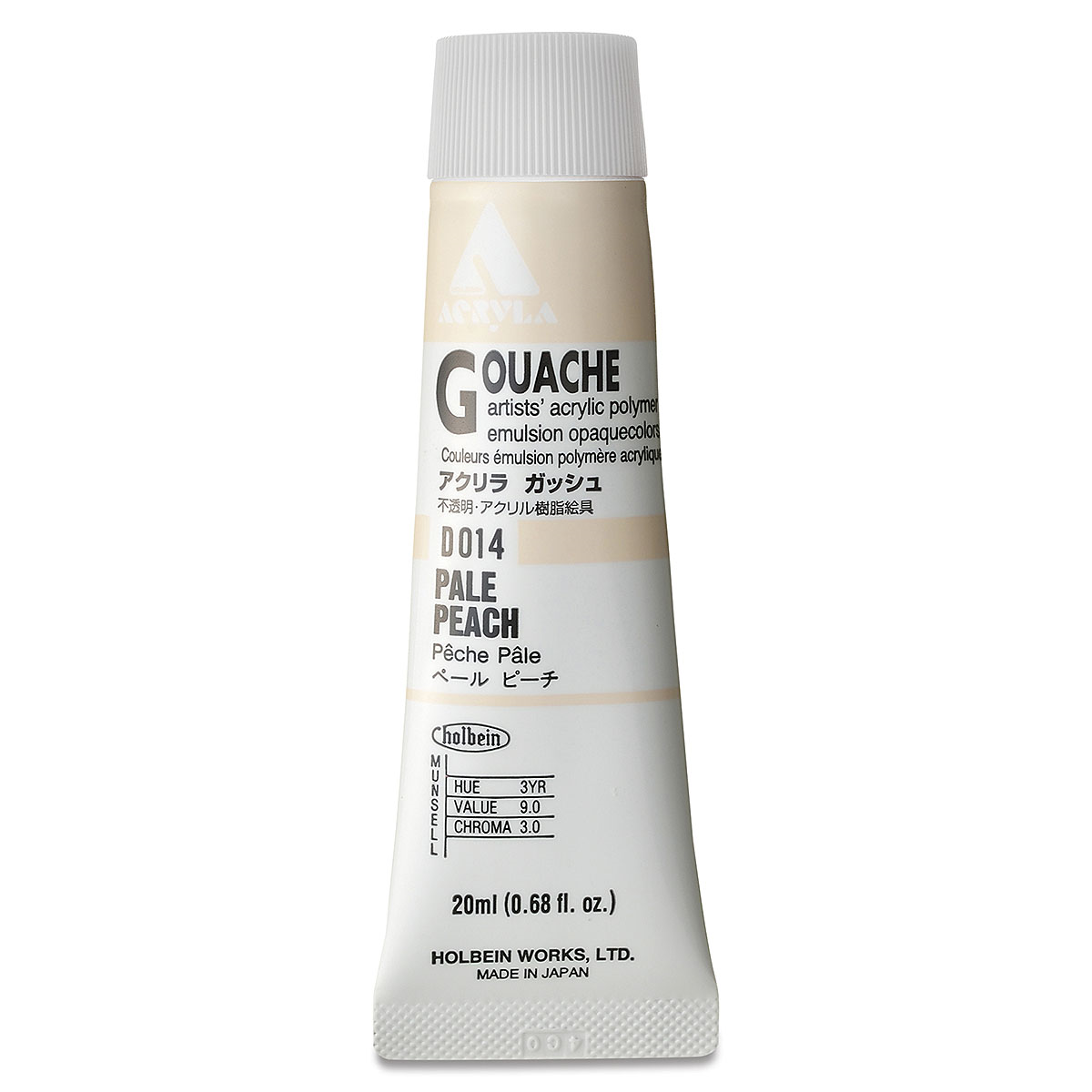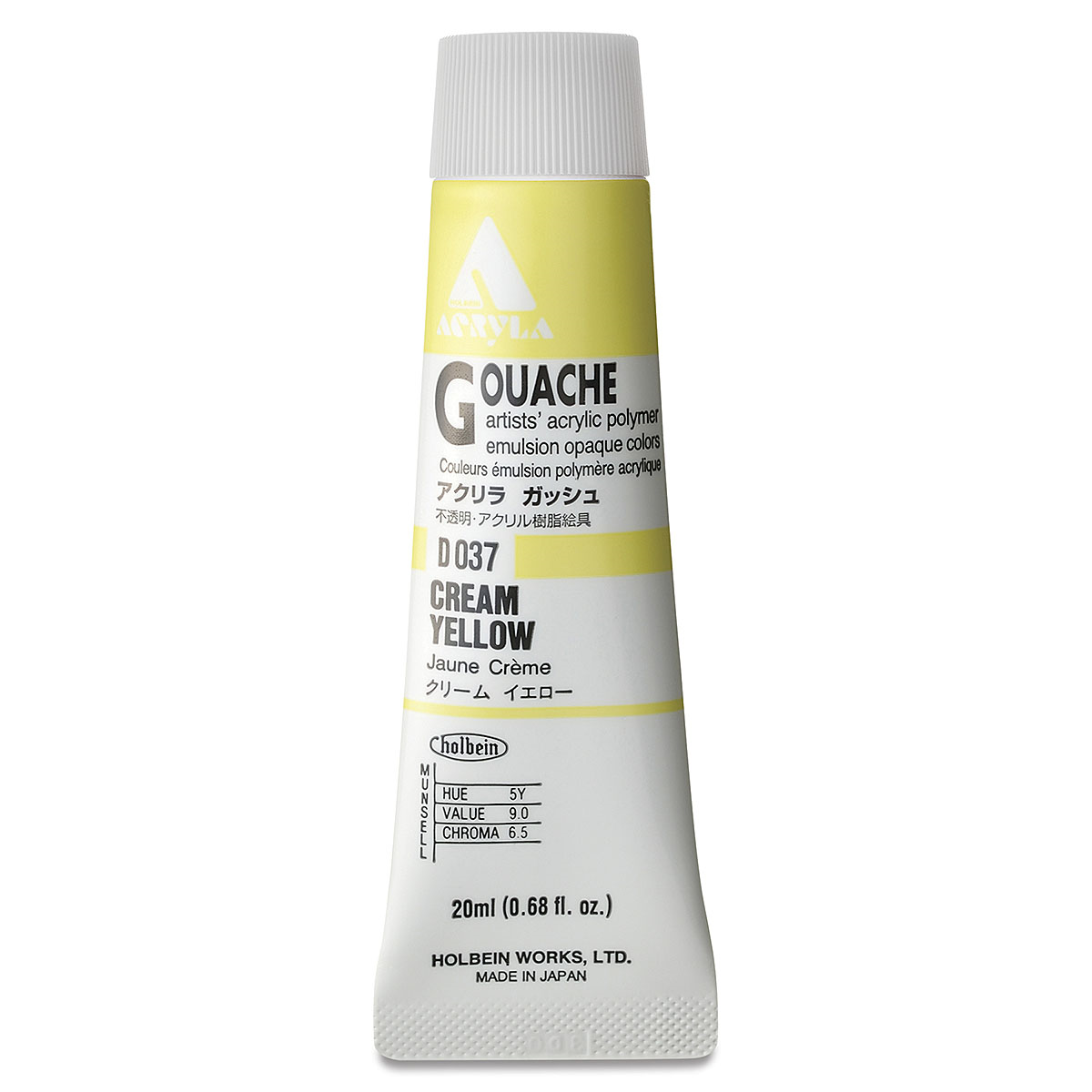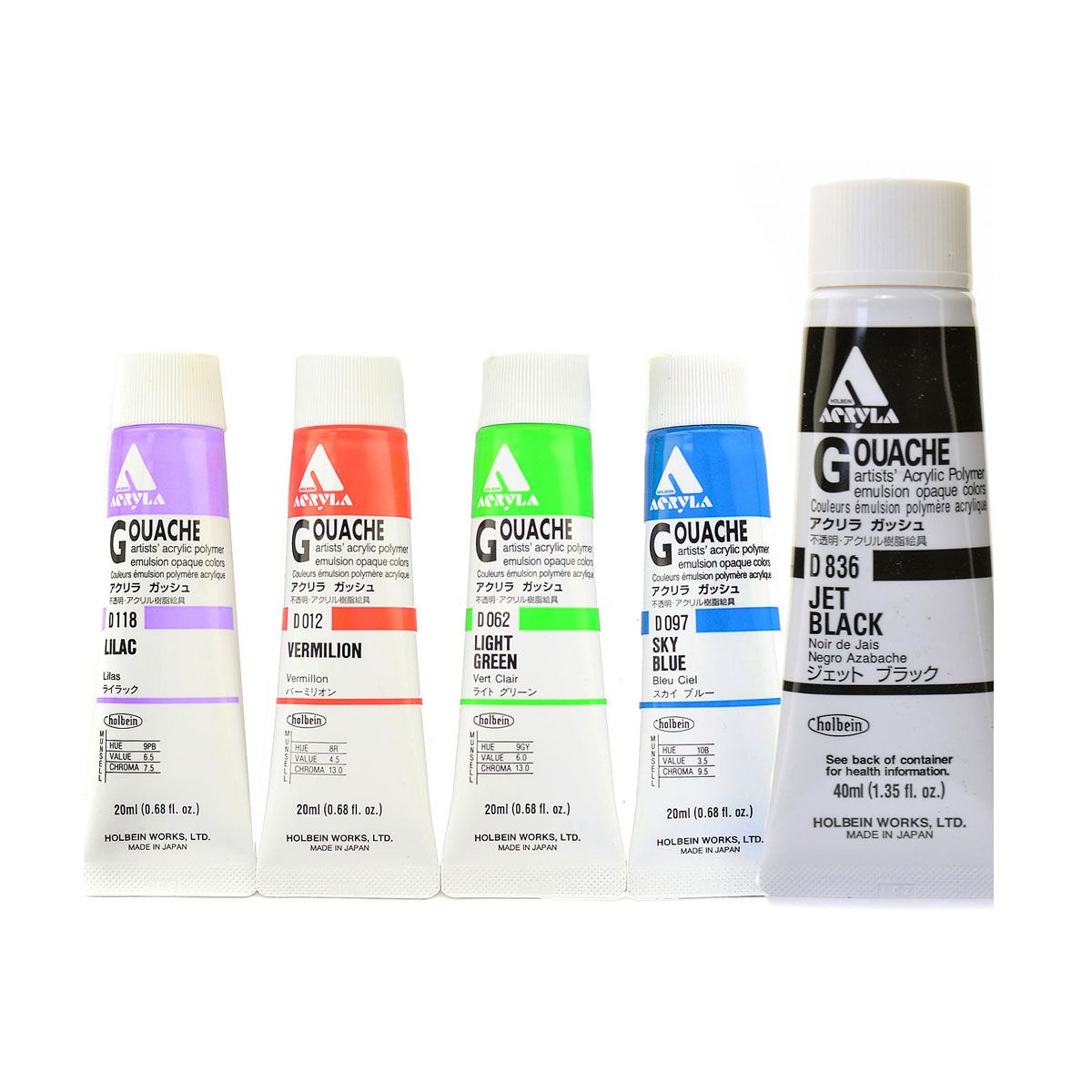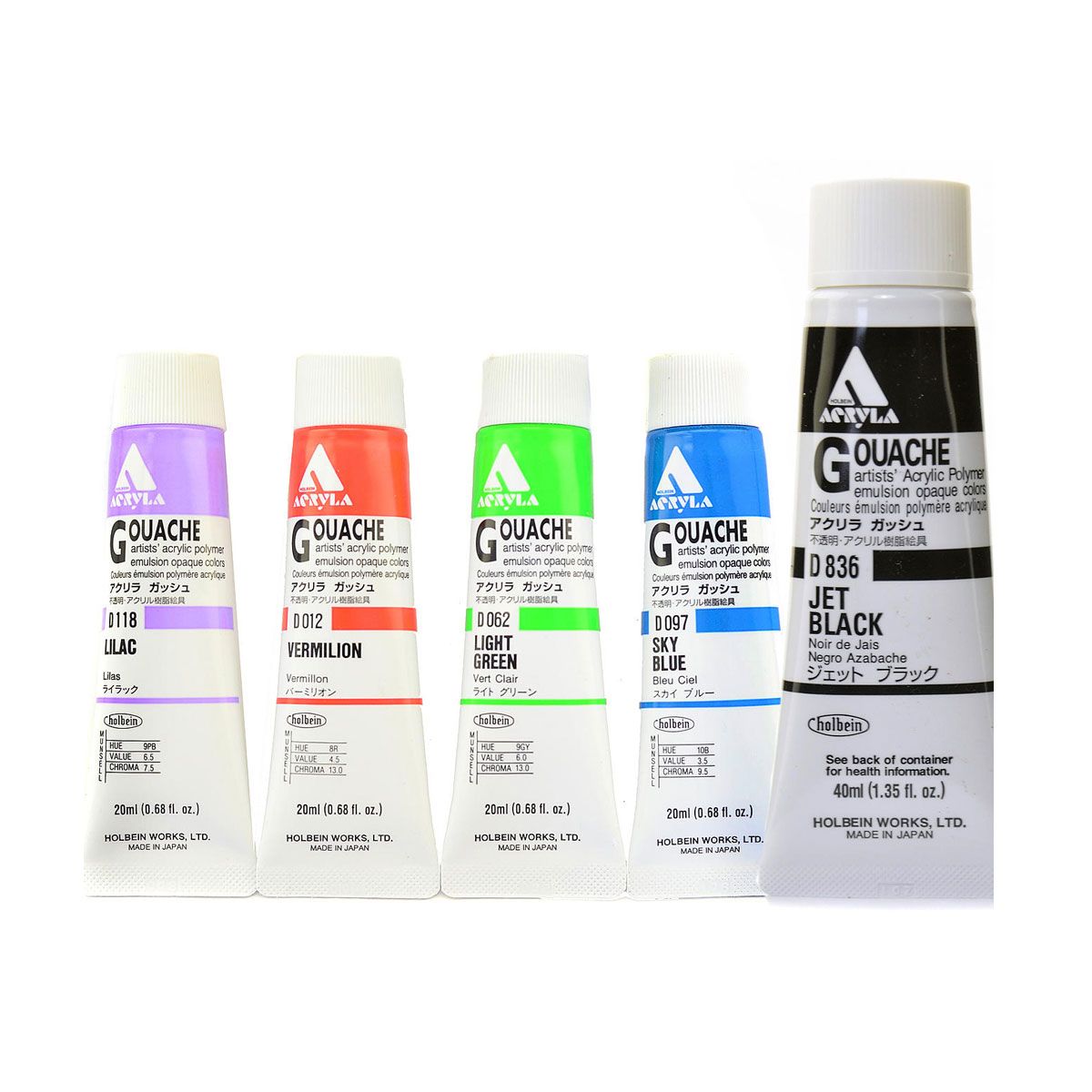Holbein Acryla Gouache Pale Peach 20 ml
D014 Pale Peach/Pêche Pâle - Naphthol Red PR9, PY83 Diarylide Yellow 83, Titanium White PW6
Diarylide Yellow comes from a family of azo pigments called Diarylide. These yellow-hued pigments were developed around 1940 and are very important in printing inks. Titanium dioxide was discovered in 1821 and mass-produced until 1919. Extensive use of the pigment began in the 1940s and has become the most commonly used white pigment.
Series: A
Lightfast: **
D014 Pale Peach/Pêche Pâle - Naphthol Red PR9 (monoazo, PY83 Diarylide Yellow 83 (Organic, disazo), Titanium White PW6 (inorganic, titanium dioxide)
Series: A
Lightfast: **
Pigment 1: PR9 Naphthol Red
History Unknown
Pigment Name: Naphthol Red PR9
Pigment Type: monoazo
Chemical Name: n/a
Properties: This Naphthol Red is a bright deep red with bluish undertones. It has an average drying time.
Permanence: This Naphthol Red has fair to good lightfastness, not because of its masstone, but because it fades in tints. Not suitable for exterior use.
Toxicity: Naphthol Reds are not considered toxic. They may cause eye, skin, or respiratory irritation. Should avoid contact with dry pigment.
Alternate Names: Naphthol, Naphthol Bordeaux, Naphthol Carbamide, Naphthol Carmine, Permanent Carmine, Permanent Red.
Pigment 2: PY83 Diarylide Yellow 83
Diarylide Yellow comes from a family of azo pigments called Diarylide. These yellow-hued pigments were developed around 1940 and are very important in printing inks.
Pigment Name: PY83-Diarylide Yellow 83
Pigment Type: Organic, disazo
Chemical Name: n/a
Properties: Diarylide Yellow is a semi-opaque, moderately staining, intense deep reddish yellow pigment with good tinting strength.
Permanence: Diarylide Yellow 83 has excellent lightfastness and permanence. However, it can fade in tints, so some artists do not consider it suitable for their colour palette. Many other diarylide yellow pigments are fair to poor lightfastness, and some are entirely fugitive. Diarylide Yellow 83 is reputed to be one of the most permanent of the entire group.
Toxicity: Diarylide Yellow has no significant acute hazards, but chronic risks have not been well studied.
Alternate Names: Benzidine Yellow, Diazo Yellow.
Pigment 3: Titanium White PW6
Titanium is the ninth most abundant element in the Earth's crust; however, mineral deposits that are economical to mine are less common. Titanium dioxide was first discovered in 1821, although it could not be mass-produced until 1919. Widespread use of the pigment began in the 1940s. Since that time, it has become the most commonly used white pigment. The name comes from the Latin word Titan, the name for the elder brother of Kronos and ancestor of the Titans, and the Greek word tito, meaning day or sun.
Pigment Name: Titanium White PW6
Pigment Type: Inorganic
Chemical Name: Titanium dioxide
Properties: Titanium White is the most brilliant of the white pigments. It is considered an all-purpose oil colour useful in all techniques and the best all-around white. Its masstone is neither warm nor cool, placing it somewhere between Lead White and Zinc White. It is less prone to cracking and yellowing than Lead White, but it still yellows easily. Titanium White dries slowly in oil form, more slowly than Lead White but more quickly than Zinc White. It is opaque in oil and acrylic forms and semi-opaque in watercolour. This pigment has good chemical stability, and its tinting strength is superior to both Lead White and Zinc White.
Permanence: Titanium White has excellent permanence and lightfastness.
Toxicity: Titanium dioxide is highly stable and is regarded as completely non-toxic. Animal studies do not indicate that it is absorbed biologically, even after long periods of exposure. The primary safety concern is with inhalation of fine pigment dust particles. If inhaled in large amounts over the course of several years, Titanium White may cause a benign pneumoconiosis that is visible on x-rays. The National Institute of Occupational Safety and Health (NIOSH) considers fine titanium dioxide particles, if inhaled, to be a human carcinogen. The primary concern for artists is to avoid exposure to fine particulate dust from raw pigments.
Alternate Names: None.
| Size | 20 ml |
|---|---|
| Brand | Holbein |
| Country of Manufacture | Japan |
| Type of Store Credit value | Select |
















